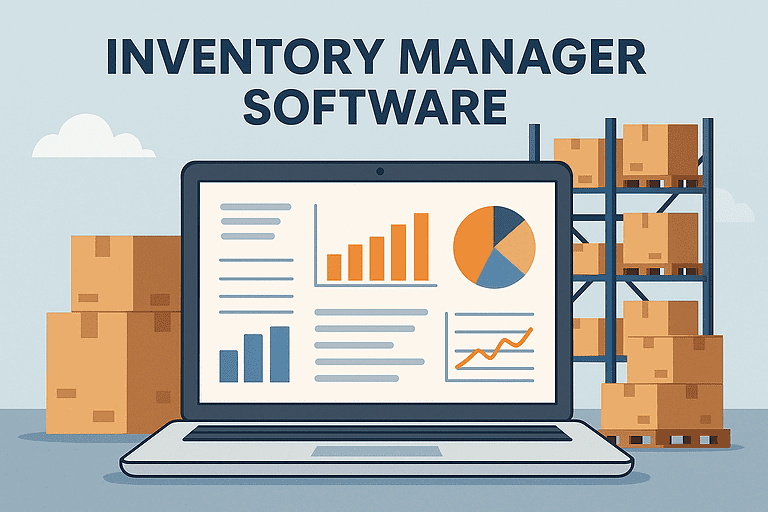ABC Analysis: The 7 Secrets to Smarter Inventory Management
Are you struggling with inventory management? ABC Analysis can help! Learn how to prioritize your stock for better control and maximize profits.
Key Takeaways
- ABC Analysis is a method of inventory management that categorizes items into three groups based on their financial value: ‘A’ items are the most valuable, ‘B’ items have moderate value, and ‘C’ are the least valuable.
- The technique is based on the Pareto Principle, which states that a small percentage of inventory items (approximately 20%) generate a large majority (around 80%) of the company’s revenue. This principle allows businesses to prioritize resource allocation effectively.
- Implementing ABC Analysis improves inventory control, reduces costs, enhances customer satisfaction, and can be streamlined with technology and software tools; regular review and collaboration with suppliers are critical for its ongoing success.

ABC analysis categorizes inventory into three levels: category A includes the most valuable items, category B contains moderately valuable items, and Category C holds the least valuable ones.
This technique aids companies in optimizing their inventory management by concentrating on items of the highest importance. The article will guide you through how ABC analysis functions, how to execute it step-by-step, and what advantages it offers.
Table of Contents
Understanding ABC Analysis
ABC Analysis is a strategic approach to inventory management that organizes items into three categories based on their value: ‘A’ items are the most valuable, ‘B’ items have moderate value, and ‘C’ items are the least valuable.
This method aims to identify maximum revenue-generating products and important clients, ensuring they get the attention they deserve. For example, ‘A’ products typically comprise about 20% of items but generate 80% of revenue.
On the other hand, ‘C’ products make up around 50% of inventory but only generate 5% of revenue. A clear understanding of each item’s equal value enables businesses to distribute their resources efficiently, enhancing profitability.
The Fundamentals of ABC Inventory Analysis

The Pareto Principle, also called the 80/20 rule and originally formulated by Vilfredo Pareto, posits that a small proportion of causes (20%) often leads to a large portion (80%) of effects. This notion has been extensively adopted in inventory management practices.
Companies can more strategically allocate their resources by identifying which 20% of their inventory items are responsible for 80% of their profits. This not only enhances profitability but also bolsters operational efficiency.
The Pareto Principle in Inventory Management
Understanding the Pareto Principle is crucial in inventory control. Commonly known as the 80/20 rule, this principle asserts that roughly 20% of items are responsible for approximately 80% of the overall value or sales frequency.
Grasping this essential concept enables enterprises to focus on their most valuable inventory pieces and considerably improve their business results.
For example, it is commonly seen that ‘A’ category goods generate around 80% of revenue despite being only a fraction of all products available in inventory.
Categorizing Inventory into A, B, and C Classes
The categorization of inventory into A, B, and C classes is a key component of ABC Analysis. Items in class ‘A’ are the most significant, representing 70% to 80% of the total value held in inventory.
The limited group within stock levels requires these high-value items to lead in sales generation and regular replenishment orders to ensure supply does not run low.
In contrast, ‘B’ category products make up roughly 15% to 25% of the entire inventory, ‘s worthwhile supporting over one-fifth of corporate earnings. They yield moderate sales and profits with occasional evaluations for potential reclassification.
Lastly, items under classification ‘C’ might be more than half regarding product references, but their contribution towards revenue is modest at best—below 5%. High stock quantities define these less demanded goods within an inventory system.
Steps to Conduct ABC Analysis
To properly execute the ABC method, adhere to a structured process of ABC Analysis. Follow these steps:
- Collect critical information for every inventory item, such as its name, quantity on hand, and price per unit.
- Compute the annual consumption value for each item by multiplying its yearly demand with the cost per unit.
- Ascertain the aggregate value of your full inventory by adding all individual item values together.
Subsequently, inventory items should be organized in descending order based on their annual consumption value. Then, they can be categorized as ‘A,’ ‘B,’ and ‘o’, using cumulated percentages as a basis.
Calculate Annual Consumption Value
In inventory control, executing an ABC Analysis begins with computing the annual consumption value of inventory items. This pivotal measure encapsulates the yearly significance of these items, taking into consideration costs, and serves as a cornerstone for thorough analysis.
To ascertain each item’s annual consumption value within the inventory, one multiplies its yearly usage by its cost per unit. The outcome yields an accurate valuation for each item across a year—this figure is crucial when performing a comprehensive ABC Analysis on your stock.
Sort and Rank Inventory Items
After determining the annual consumption value for each inventory item, the following procedure involves organizing and arranging them. This is executed by listing them in descending order according to their aggregate worth.
Companies can pinpoint which items yield the highest returns by placing items on a spectrum from those with the greatest to the least annual consumption value.
Such action is integral to allocating resources efficiently and steering inventory control. It allows businesses to concentrate efforts where they have the most financial impact.
Assign Inventory to Categories
In the final stage of ABC Analysis, inventory items are classified according to their cumulative value percentages. Generally, ‘A’ items comprise 10-20′ ‘and represent the most significant value.
‘B’ items constitute roughly 20-30%, while ‘C’ items account for approximately 50-60%. This system enables companies to distribute their resources more effectively by prioritizing ‘A’ items that contribute large ‘l’ to revenue generation.
Benefits of Implementing ABC Analysis

Utilizing ABC analysis in inventory management can significantly enhance the effectiveness of controlling stock. This approach prioritizes items of higher value, ensuring their availability whenever needed, which solidifies inventory control and minimizes safety stock levels.
TBC analysis contributes to heightened customer satisfaction due to reliable stock availability for high-demand products, fostering increased sales and reinforcing customer loyalty. It offers an opportunity for strategic pricing decisions that align with product popularity and may bolster profit margins.
Improved Inventory Control
ABC Analysis is crucial in improving inventory control by classifying goods based on their importance to a company’s profitability. The company’s high-value items receive the greatest focus and resources within inventory control.
Such strategic inventory control enhances overall store strategies by pinpointing top-selling products, informing replenishment decisions, and optimizing supply chain management activities.
Cost Reduction and Efficiency
Prioritizing ABC Analysis will help negotiate improved agreements with suppliers—this strategic inventory containing high-value items results in this strategy cost reductions and heightened operational efficiency.
Optimizing inventory using the principles of ABC Analysis can lead to substantial savings on warehousing expenses, which Boosts business efficiency.
Enhanced Customer Satisfaction
ABC Analysis contributes to increased customer satisfaction by maintaining a consistent stock of highly sought-after products. Companies can markedly elevate their customer service and contentment with the most valuable products.
They are systematically merchandised according to consumer demand and aid in the effects of effectively managing cycles, guaranteeing that favored goods remain accessible for the clientelist at all times.
Best Practices for Effective ABC Inventory Management
Several best practices are integral to effective ABC Inventory Management. Resource allocation is crucial, with Category ‘A’ items receiving the most monitoring and resources. Adopting technology to manage inventory can simplify the process from end-to-end, automating tasks such as:
- Tracking and reporting on product turnover
- Sales
- Forecasting demand
- Managing stock levels
These practices can help streamline inventory control and improve efficiency by implementing effective control methods through a WMS system.
Additionally, creating strong relationships with suppliers ensures an efficient supply chain, better communication, and no delays. Last but not least, the application and regular review are key to the successful implementation of ABC Analysis.
Regular Review and Reclassification
Regular examination and inventory reorganization are critical application components for optimal results. Fluctuations in market conditions, alterations to the customer base, evolving purchasing behaviors, emergence of new trending products, or strategic business adjustments may all require a realignment in how inventory is classified.
By routinely evaluating these classification categories, businesses can accommodate such variations, maintaining precise categorization that underpins successful inventory control strategies.
Leveraging Technology and Software Tools
Integrating technology and software solutions is essential for proficient ABC Inventory Management in today’s digitally driven lands. These. Advanced inventory optimization applications can expedite and refine the entire process of conducting an ABC Analysis, thus diminishing time investment and labor demands.
Merchants can enhance their inventory management effectiveness by utilizing instruments such as Shopify POS, bar code scanners, Stocky by Shopify app, and the Shopify mobile app. These tools enable rapid counting of inventory items, which bolsters efficiency within this critical business operation.
Collaboration with Suppliers
Building strong connections with suppliers is a crucial best practice in ABC Analysis. These solid supplier relationships contribute to an effective supply chain, improve communication, and may result in priority access to high-value items. Such advantages can lead to reduced costs and reliable stock availability, amplifying ABC Analysis’s benefits.
Common Solutions in ABC Analysis

ABC Analysis, like other techniques, has its unique set of difficulties. Challenges consist of:
- The extensive time required to collect data
- A lack of consideration for variations in seasonal demand
- Difficulties encountered when incorporating new products into the ABC Analysis system
With careful planning and strategic approaches, it is possible to surmount these obstacles.
Technological advancements can significantly expedite the process by automating data collection and examination, thus lessening the workload.
Addressing Seasonality and Trends
Inventory categorization can be affected by factors such as seasonal demand and shifting trends. For example, an item usually classified as a ‘C’ in inventory may rise to an”” status during specific seasons. Consequently, companies should modify their ABC Analysis periodically to reflect these variations and maintain a precise classification of items.
To keep abreast of evolving trends and manage their inventory efficiently, businesses must engage in frequent reassessment and reclassification. This process is critical for effective inventory management amidst changing consumer demands.
Dealing with New Product Launches
Incorporating fresh products into the ABC Analysis structure presents a significant hurdle. The absence of past sales information for these new items makes precise classification challenging. Nevertheless, companies can surmount this obstacle through several strategies.
- Assessing the expected market influence and forecasted sales of the item
- Temporarily placing the product in an initial category.
- Subsequently, re-evaluate its classification once staff is re-evaluated and adjusted client sales data has been gathered.
Using ABC Analysis for Cycle Counting
The ABC Analysis technique is valuable for managing inventory and maximizing cycle counting efficiency. Cycle counting entails regularly checking a fraction of your inventory to ensure all items are accounted for within a designated timeframe. Utilizing ABC Analysis in this process, higher priority is given to essential, high-volume inventory pieces. This approach guarantees that more frequent counts are conducted on high-value items.
Adopting such an approach ensures enhanced precision in tracking inventory and minimizes discrepancies, thereby enabling the better maintenance of accurate records concerning inventory data and facilitating superior business performance outcomes.
Real-World Applications of ABC Analysis

ABC analysis is a widespread practice across diverse sectors and organizations. Notably, retail giants such as Walmart and Amazon utilize this method to systematically handle inventory within their various outlets by focusing on high-value A-items, thus guaranteeing constant availability.
The adoption of ABC analysis transcends several industries where it’s employed as a strategy to orchestrate inventory management while assigning significance levels among different items. For instance:
- Within the automotive industry, spare parts inventories are managed using ABC analysis, which means that trial components receive preferential maintenance treatment.
- The pharmaceutical sector leverages ABC classification for efficient drug inventory control, pivotal in avoiding shortfalls of vital medicines and adhering to regulatory standards.
- E-commerce entities also benefit from applying ABC analysis when organizing their stockpile—focusing particularly on assuring that products with substantial demand remain consistently supplied.
ABC Analysis facilitates structured oversight over an enterprise’s portfolio of goods and services based on value categorization. It ensures that companies can meet customer expectations through adept administration of resources, especially those deemed most valuable.
Thus, ABC Analysis leverages its utilitarian use far beyond simple storage considerations into realms affecting production flow and market fulfillment capacities efficiently.
Summary
In conclusion, ABC Analysis is a powerful tool for effective inventory management. Businesses can focus their resources on high-value items by categorizing inventory into ‘A’, ‘B’, and ‘C’ classes, leading to enhanced inventory control, cost reduction, and improved customer satisfaction.
However, implementing ABC Analysis requires regular review and reclassification to account for market changes and shifting trends. With the right approach, ABC Analysis can significantly enhance inventory management and boost business outcomes.
Frequently Asked Questions
What is ABC Analysis in inventory management?
In inventory management, ABC analysis is a technique that segments inventory into A, B, and C categories according to its value. This stratification aims to enhance the oversight and administration of inventory stems.
How is ABC Analysis conducted?
Begin your ABC Analysis by compiling data on each item in the inventory and determining its overall worth. Subsequently, order the items according to to the value of their annual consumption and categorize them according to cumulative percentage thresholds.
Utilizing this technique serves to streamline prioritization efforts within inventory management.
What are the benefits of implementing ABC Analysis?
The application of ABC Analysis leads to improved control over inventory, diminished costs associated with storage, heightened customer satisfaction levels, and opportunities for strategic pricing that can contribute to an uptick in profit margins.
What are some challenges in implementing ABC Analysis?
Implementing ABC Analysis can be fraught with hurdles, such as the extensive time required to collect data, failure to consider fluctuations in demand due to seasonality, and difficulties incorporating new product lines into the system.
These obstacles can be overcome through meticulous planning and strategic execution.
Can ABC Analysis be used in cycle counting?
Indeed, by applying ABC Analysis during the cycle counting process, businesses can focus on essential high-volume items to enhance inventory precision, which fosters more favorable company results.



